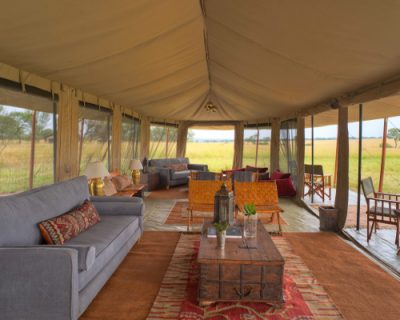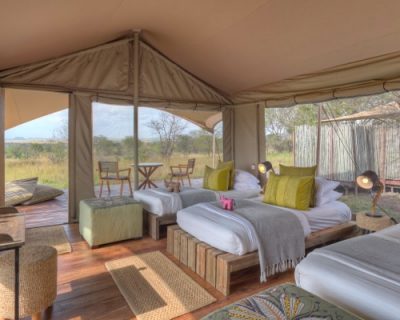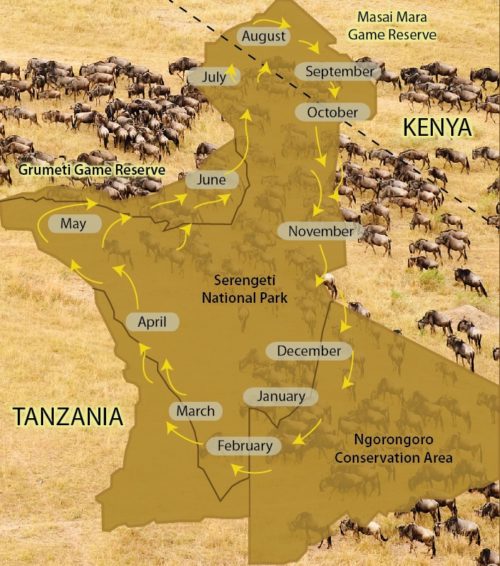Serengeti
The land of Endless plains
The Serengeti...
A staggering thirty-two thousand squire kilometers of golden glass lands, sun-soaked treetop and rich marshes fed by the mighty Mara river. It’s the region that hosts one of the worlds most epic shows, the great migration.
The annual Great Migration with millions of wildebeest thunders across the savanna, followed by hungry predators picking off the weak and young. It’s not hard to see why the Serengeti is one of the most popular parks on the continent.

GOOD VALUE YEAR-ROUND MIGRATION & SAFARI 10 DAYS
From............$2559.00 PPS
This is a Migration itinerary backed up by some of the best wildlife viewing in Africa. When you are not watching the Migration, you will be on the lookout for the Big 5 in the Ngorongoro Crater – lion, elephant, rhino, buffalo and elephant – and enjoying diverse wildlife sightings throughout the Serengeti-Mara ecosystem
- Fly-in safari to the northern parks
- Great Wildebeest Migration viewing from specialist camps in Tanzania
- Luxurious tented suites with private bathrooms in beautiful settings
- Cultural excursions and experiences with the Maasai

TARANGIRE, HIGHLANDS & MIGRATION 8 days
From............$1559.00 PPS
Experience this fully inclusive safari that explores the Serengeti, Ngorongoro Crater, and the stunning Tarangire National Park over eight incredible days.
This exciting itinerary begins and ends at the Kilimanjaro International Airport as you fly to Tarangire for some time spent exploring this remote region. Head off to experience the Ngorongoro Crater before visiting the renowned Serengeti.
- Fly-in safari to the northern parks
- Fantastic year-round game viewing
- Inclusive of lodge, flights and game drives
- Serengeti, Ngorongoro, Tarangire and Manyara
Following the Herds
JANUARY - FEBRUARY – MARCH
APRIL - MAY
The mega herds move towards the Seronera Valley in the Serengeti. Calves are now older but predators still take advantage of an abundance of prey. Although the weather is cooler as autumn is approaching, the rains can still be heavy in some areas, while they may be drying up in others as the region heads into shoulder season. Rutting males challenge each other for territorial dominance and the right to mate.
JUNE – JULY
Winter is peak safari season in Africa so visitor numbers are high and accommodation must be secured well in advance. The wildebeest are moving slowly to the Grumeti River, still in the Serengeti. Some males may still be rutting. River crossings are hard on the wildebeest – they risk broken limbs, drowning, and attacks by predators that include massive crocodiles. Of course, the surge of the river depends on the rains: some years, the water can be low, making for safer and less dramatic crossings. Weather is cool and dry, with few bugs.
AUGUST - SEPTEMBER - OCTOBER
The wildebeest move through the eastern woodlands of the Serengeti and cross the Mara River into the Masai Mara in Kenya. Once again, danger lurks in the water. The Loita Plains in the Mara offer fresh grazing for the migrants. Weather remains coolish and dry but days are warming up and spring rains are starting.
NOVEMBER – DECEMBER
Those who have survived their year-long trek start arriving back in the Seronera Valley, on their way back south to Lake Ndutu to prepare to give birth. Weather is hot with occasional showers.


